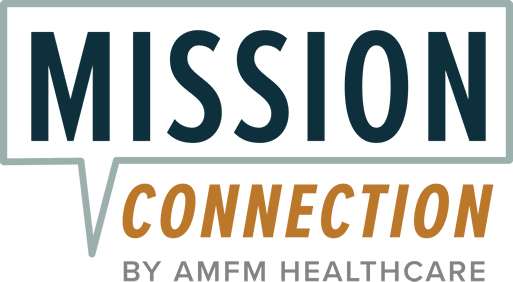Institutional Care and Attachment Issues: How to Heal From the Mental Health Effects of Institutionalization

We usually associate childhood memories with our parents, and often siblings, in a typical family home environment. While many are fortunate enough to look back on these moments fondly, it’s worth noting that some people may not have been so lucky growing up.
Upbringing can look different for some, especially for children who have been in institutional care. Examples of institutional care include foster homes, orphanages, and residential treatment facilities.
In such environments, a lot of adjustment is often required to form meaningful bonds with caregivers. Moving from place to place to receive care could possibly change how someone emotionally develops, as attachment issues can result. As a result, initiating and maintaining relationships can be more difficult for those who have received institutional care.
If you’re concerned about attachment issues in relationships in yourself or someone else, and you feel these may be linked to institutional care, healing can be achieved through professional support. This article can also work as a helpful guide, as it covers:
- How institutional care impacts attachment
- The mental health effects of institutional care
- Long-term effects of institutional care on relationships
- Effective therapeutic approaches to promote healing
- Healing through support and community
- How Mission Connection can help

How Institutional Care Impacts Attachment
A child growing up in a positive, loving, and supportive environment will likely feel warmth, security, and support. As a result, they may grow up to feel secure and be less likely to have anxiety that could interfere with their relationships. This is because such a safe foundation fosters the development of a healthy blueprint for how the world works.
It’s important to outline that the same security can be found in the foster homes with loving caregivers, and it’s certainly possible to have a positive upbringing within institutional care. However, for a number of people, this isn’t always the case.
In some circumstances, institutional environments provide caregiving that is fragmented, inconsistent, or impersonal. Keep in mind that staff are often involved in caregiving, so there’s often much more to consider in terms of quality of care. For example, one staff member may be responsible for caring for many children, so it might be difficult to give a child a consistent level of care. There may also be a lack of training with regard to attachment needs, or a limited time with which to build meaningful, nurturing relationships with each child.
So it’s easy to see the difference between care in a typical family home and care in an institution, and how this may affect someone’s ability to develop and maintain healthy relationships. In fact, research shows that people are more likely to develop an insecure attachment from institutional environments.1
Research has also shown that children raised in institutional care are often more prone to anxiety, delayed learning, and difficulties controlling their emotions.3 These challenges are linked to a lack of consistent caregiving during the formative years of childhood, disrupting the foundations of their values and identity formation.
The Role of Developmental Trauma in Attachment Disorders
Developmental trauma is, unfortunately, a common outcome in people who have experienced neglect, instability, and emotional deprivation in their early lives. A lack of meaningful connection and nurturing environments can make it hard to grow emotionally and could create difficulties in regulating emotions, impulse control, and social skills in later life.10
Additionally, children raised in institutions who experience developmental trauma are more likely to develop attachment disorders. These include reactive attachment disorder (RAD) and disinhibited social engagement disorder (DSED). The symptoms of attachment disorders include the following.2
- Difficulties forming emotionally appropriate connections, resulting in relationships that could be described as “intense” or “emotionally distant”
- Impaired trust as a result of spending time with different caregivers or poor experiences within care
- Problematic social behaviours, particularly if a child has suffered from neglect in institutional upbringing. As a result, they may act out in ways that might be considered socially “inappropriate”
Further, studies show that early neglect and inconsistent caregiving can disrupt pathways in the brain responsible for processing emotions, leading to increased risk of anxiety and depression.11
Ideally, for those who have suffered trauma as a result of institutional care, it’s worth considering comprehensive therapy for attachment and developmental trauma.
Attachment Trauma From Institutional Care
Attachment trauma describes a form of trauma in which needs go unmet by caregivers during the formative, early years of life. For example, if a child is hungry or upset, they signal their need through specific cues, expecting their caregiver to meet them.
Unfortunately, immediate, attuned, and consistent care in an institutional setting may not always be possible. This is often the case when other children are also in need or when staff are not adequately trained – or cannot offer the same warmth as a parent.
When needs remain unmet, it creates issues with trusting others and also makes it harder for some to regulate their own emotions. Emotional neglect, which is sadly a common feature in institutional care, can make these effects worse and may limit a child’s capacity to form healthy attachments later in life.4
Without effective healing experiences, these effects commonly continue into adulthood. For example, studies show that adults who spent their early years in institutional care often find it difficult to manage stress, form intimate relationships, and maintain stable emotional health.5
These adults may have unresolved attachment trauma, which includes symptoms such as the following.
Symptoms of Attachment Trauma in Adults:
- Emotion regulation problems: People with attachment trauma often struggle to accurately detect and manage their emotions.
- Fear of abandonment: Attachment trauma can lead to intense fears of being abandoned, especially when growing up in institutional care is a factor. This can manifest as significant anxiety around a partner potentially leaving or becoming disinterested and can have huge impacts on relationships.
- Difficulties with intimacy: As being intimate requires vulnerability and trust, it’s not always easy for those who have suffered trauma to allow themselves to be emotionally open.
Recent studies also show that children who move from institutional care to foster care face unique challenges with attachment repair after adoption or placement.6 This means that, even in loving new families, these children may behave in ways that can be seen as warning signs that they’ve had trauma in the past. Signs a child has experienced trauma include the following.
Signs of Attachment Trauma in Children:
- Emotional withdrawal: Children with attachment trauma may display less emotion. For example, instead of laughter and tears, they may seem disinterested or “numb.”
- Indiscriminate friendliness: It’s understandable that a history of feeling let down could impact the ability to bond with caregivers and others. Therefore, a child may seek affection from just about anyone or trust indiscriminately. This is particularly the case in children with DSED.
- Reactive aggression: Difficulty regulating emotions, or more simply, struggling to calm oneself down in moments of stress, is unfortunately common in those with past trauma relating to care. Reactive aggression can look like irritability, being “snappy” or quick to react, aggressive tones, causing offense, or even becoming physical. This form of aggression may be present in children with RAD.
It’s therefore clear that attachment trauma from institutional care can result in a lot of problems for those affected, in particular when it comes to relationships. So it’s important that attachment trauma is addressed and resolved. We discuss treatment options for attachment trauma next.
Therapy for Attachment After Institutionalization
Healing from attachment trauma can be complex, but the good news is it’s possible with the right therapy, support, and time.
For children, interventions should create safe, consistent experiences that foster trust and emotional growth. Some examples include:
- Dyadic developmental psychotherapy (DDP): This type of therapy involves children and, preferably, their caregivers. A therapist actively listens to the child describe their experiences and, using positive tones and empathetic language and eye contact, helps to reframe the child’s narrative.7
- Theraplay: This is a combination of therapy and play. It engages children in play and interaction in a way that mimics ideal caregiving qualities that were absent in their early lives.8
For adults, attachment-based treatment for early life trauma usually involves approaches such as:9
- Eye Movement Desensitization and Reprocessing (EMDR): This involves recounting traumatic experiences with a therapist while responding to prompts that encourage eye movement in ways that help the brain process the events.
- Trauma-focused cognitive behavioural therapy (TF-CBT): CBT is a very popular form of talking therapy that helps those with negative thought patterns use practical tools to reframe their inner narratives. By doing so, it promotes balanced and positive thinking.
- Medication: If mental health symptoms are severe or ongoing, it’s a good idea to speak to your healthcare provider about prescription medications. Usually, these come in the form of antidepressants or anti-anxiety medications.
Other, less formal interventions exist. Healthy habits outside of therapy and healthcare settings should be encouraged, and are a good way of maintaining emotional balance at home. Stress management techniques such as breathing exercises (controlled, slow, deep breaths), journaling, and guided meditation are just a few techniques that can help lower stress levels. Moreover, these strategies can be used anywhere at any time, even at work.
Healing Through Support and Community
Therapy is often one part of a bigger picture that involves healing through nurturing caregiving and community involvement. Support is out there. The following are some organizations that support children, adolescents, and adults affected by trauma as a result of institutional care;
- The Attachment and Trauma Network (ATN): This offers education, peer support, and advocacy for families affected by attachment trauma
- The Child Trauma Academy: Provides training and resources for professionals working with traumatized children
- Adoption Exchange Association: Supports adoptive and foster families navigating attachment challenges
- The Foster Care Alumni of America: Community support for those transitioning from foster care or institutional settings
It’s also worth seeking communities that are involved with or affected by these issues. Finding others to be open and honest with, discussing past traumas, sharing interests, and developing bonds, can do wonders for well-being. In fact, community connections, peer groups, and mentoring programs are all shown by studies to be very beneficial for attachment healing after foster care or orphanage environments.12
Mission Connection: A Helping Hand in Healing
If you or someone you care about has been affected by the complications that come with institutional care, know that you’re not alone. Mission Connection understands how complicated life can be when your childhood involved moving foster homes or being cared for by staff in a home.
For most, institutionalization is not an ideal form of care. All children deserve to be cared for and nurtured in a way that promotes healthy relationships, trust, and emotional well-being in later life. For adults who still carry the baggage of past traumas, healing is on the horizon.
Our team can help. We’re dedicated to ensuring that the process of navigating trauma as a result of institutional care is as smooth as possible. We offer comprehensive medication monitoring alongside various treatments and therapies, enhancing chances for successful and sustained recovery.
Medication alone may not address the root causes of mental health issues, but alternatives are available. Combining medication with therapy options, holistic approaches, and lifestyle changes can increase its benefits and improve outcomes. We can also provide online telehealth services to accommodate your schedule. This flexibility allows you to receive care that fits seamlessly into your daily routine.
If you’re ready to explore our treatment options, contact us today or complete our confidential contact form for more information.

References
- Zeanah, C. H., & Gleason, M. M. (2015). Annual Research Review: Attachment disorders in early childhood—clinical presentation, causes, correlates, and treatment. Journal of Child Psychology and Psychiatry, 56(3), 207–222. https://doi.org/10.1111/jcpp.12347
- Smyke, A. T., & Zeanah, C. H. (2016). Attachment disorders: Assessment strategies and treatment approaches. Current Opinion in Psychology, 2, 63–67. https://doi.org/10.1016/j.copsyc.2015.04.006
- Rutter, M., & The English and Romanian Adoptees Study Team. (1998). Developmental catch-up, and deficit, following adoption after severe global early privation. Journal of Child Psychology and Psychiatry, 39(4), 465–476. https://doi.org/10.1111/1469-7610.00340
- Perry, B. D. (2006). Applying principles of neurodevelopment to clinical work with maltreated and traumatized children. Working with Traumatized Youth in Child Welfare, 27–52.
- Dozier, M., Stovall, K. C., & Albus, K. E. (2008). Attachment and Biobehavioral Catch-up: Addressing the needs of infants and toddlers exposed to inadequate or problematic caregiving. Journal of Pediatric Psychology, 33(9), 891–899. https://doi.org/10.1093/jpepsy/jsn045
- Hughes, D. A. (2012). Attachment-Focused Family Therapy. W. W. Norton & Company.
- Schofield, G., & Beek, M. (2009). Attachment handbook for foster care and adoption. Bristol: The British Association for Adoption & Fostering.
- Wallin, D. J. (2007). Attachment in Psychotherapy. Guilford Press.
- Teicher, M. H., & Samson, J. A. (2016). Annual research review: Enduring neurobiological effects of childhood abuse and neglect. Journal of Child Psychology and Psychiatry, 57(3), 241–266. https://doi.org/10.1111/jcpp.12507
- Schore, A. N. (2015). Affect Regulation and the Origin of the Self: The Neurobiology of Emotional Development. Routledge.
- Lyons-Ruth, K., & Jacobvitz, D. (2008). Attachment disorganization: Genetic factors, parenting contexts, and developmental transformation from infancy to adulthood. In J. Cassidy & P. R. Shaver (Eds.), Handbook of attachment: Theory, research, and clinical applications (2nd ed., pp. 666–697). Guilford Press.
- Zeanah, C. H., & Boris, N. W. (2000). Disturbances and disorders of attachment in infancy. Child and Adolescent Psychiatric Clinics of North America, 9(3), 577–592. https://doi.org/10.1016/S1056-4993(18)30089-1





